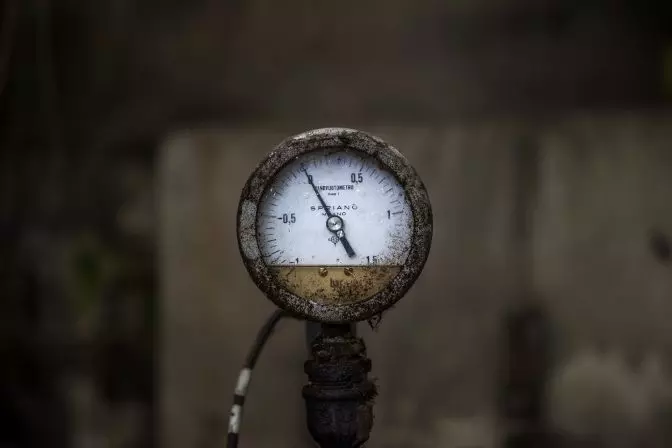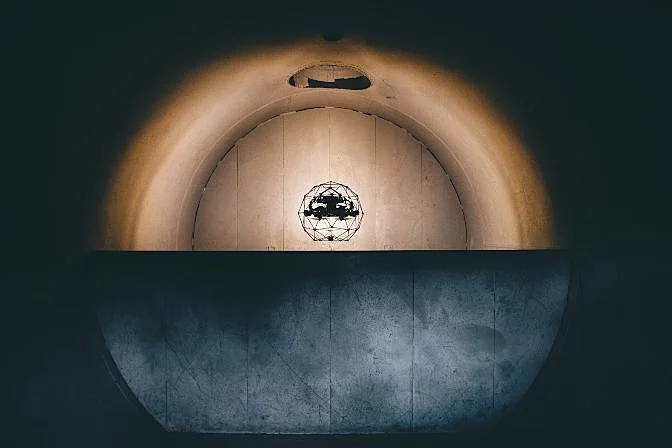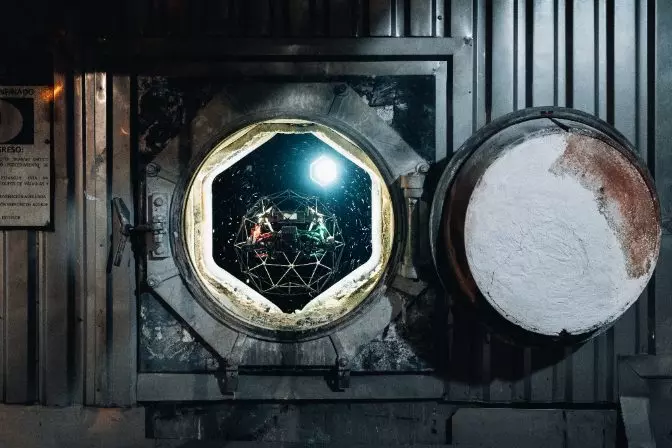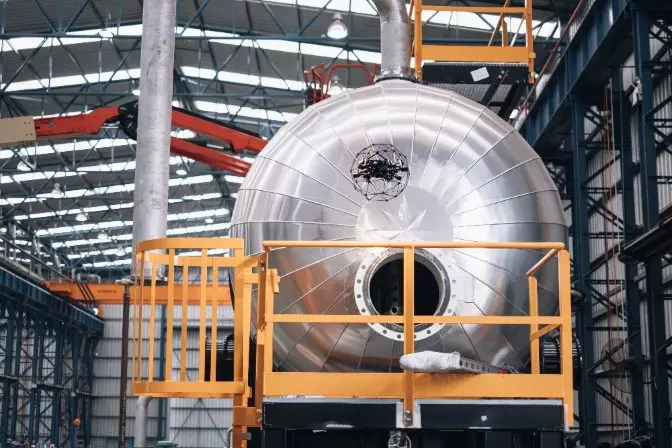What is a Pressure Vessel?
Pressure vessels are essential industrial containers designed to hold gases, liquids, or vapors under specific pressure conditions. These vessels play a critical role in various industries, including energy, chemical processing, and manufacturing.
Given the high-pressure environments they operate in, pressure vessels can pose serious risks if not properly maintained. Regular inspections are crucial for ensuring their safety and longevity. These inspections help identify potential issues before they escalate into major failures.
This guide provides an in-depth look at pressure vessels, covering their definitions, inspection requirements, common questions, and how modern technologies like drones are revolutionizing the inspection process.
What is a Pressure Vessel?
While the basic definition of a pressure vessel is a container designed to hold substances under pressure, the specifics can vary by country. In general, pressure vessels are regulated due to their inherent risks, and strict guidelines govern their design, construction, and operation.
The reason for these regulations is simple: pressure vessels can be extremely dangerous if not handled correctly. If operated beyond their design limits, they can fail catastrophically, leading to explosions, leaks, or fires that endanger both people and the environment.
Each pressure vessel has specific operating parameters, such as its design pressure and temperature, which must be strictly followed. Violating these limits can result in severe consequences, making it vital to adhere to industry standards and regular maintenance protocols.

Understanding the design and function of pressure vessels is key to ensuring safe and efficient operations across multiple industries.
Common Characteristics of Pressure Vessels
Pressure vessels typically share several key features:
- Shape: Cylindrical, spherical, and conical shapes are most commonly used due to their structural efficiency.
- Design: The design balances strength, weight, and volume to ensure optimal performance under pressure.
- Materials: Steel is the most common material, though composites and reinforced concrete are also used in certain applications.
- Corrosion Resistance: Materials must withstand environmental and chemical exposure without degrading.
- Pressure Rating: Most pressure vessels operate at 15 psig or higher, though this varies based on use case.
Psig (Pounds per Square Inch Gauge) is a standard unit for measuring pressure in many industries.
Types of Pressure Vessels
There are several types of pressure vessels, each serving a unique purpose in industrial settings:
- Storage Tanks: Used for storing liquids, often made from carbon steel.
- Boilers: Designed to generate steam or hot water for power generation or industrial processes.
- Heat Exchangers: Transfer heat between two fluids, commonly found in food processing and chemical plants.
- Process Vessels: Used for mixing, reacting, or separating materials during production.
Safety Considerations in Design
Safety is a top priority when designing pressure vessels. Key safety features include:
- Safety Valves: Prevent overpressure by releasing excess gas or liquid.
- Leak Before Burst: A design feature that ensures the vessel will leak rather than explode, providing early warning of potential failure.
These features are required by international standards like ASME and AIAA to ensure operational safety.
Pressure Vessel Inspections
Regular inspections are essential for maintaining the integrity and safety of pressure vessels. This section covers the frequency of inspections, what they involve, and the tools used to conduct them.
 The Elios 2 collects visual data during a pressure vessel inspection
The Elios 2 collects visual data during a pressure vessel inspection
Frequency of Inspections
Most regulations require pressure vessels to be inspected at least once every five years, with additional checks after installation and before commissioning.
What Is Done During an Inspection
Inspections may involve:
- Visual and thickness measurements of the vessel’s structure.
- Testing of pressure release valves and stress analysis.
- Hydrostatic testing to check for leaks or weaknesses.
Types of Testing
Five common non-destructive testing methods are used:
- Visual Testing: Identifies surface cracks and defects.
- Ultrasonic Testing: Measures material thickness and detects internal flaws.
- Radiographic Testing: Uses X-rays to find internal defects.
- Magnetic Particle Testing: Detects surface and near-surface flaws using magnetic fields.
- Dye Penetrant Testing: Reveals surface cracks using fluorescent dye.
Inspection Checklist
Inspectors typically check:
- External coatings, insulation, and welds for damage.
- Interior surfaces for corrosion, deformation, or cracks.
- Connections, flanges, and closures for proper fit and function.
A detailed checklist helps ensure all critical areas are reviewed thoroughly.
Common Questions About Pressure Vessels
Here are answers to frequently asked questions about pressure vessels:
- At what pressure does a vessel become a pressure vessel?
- What's the difference between fired and unfired pressure vessels?
- Which regulatory bodies oversee pressure vessel design and inspection?
- What are the global standards for pressure vessels?
At What Pressure Does a Vessel Become a Pressure Vessel?
Typically, a vessel is classified as a pressure vessel if it operates at 15 psig or higher.
What Is the Difference Between an Unfired and a Fired Pressure Vessel?
An unfired vessel is used for cooling or heating fluids without direct heat input, while a fired vessel receives heat, often from combustion. Fired vessels require special safety measures due to the risk of overheating.
What Regulatory Codes Apply to Pressure Vessels?
Regulations vary by region, but common standards include:
- ASME Boiler and Pressure Vessel Code (North America)
- EU Pressure Equipment Directive
- Japanese Industrial Standards (JIS)
- Australian Standards
- CSA B51 (Canada)
What Are the Pressure Vessel Standards Around the World?
Key global standards include:
- ASME Section VIII
- EN 13445 (Europe)
- CODAP (France)
- API 510 (North America)
Five Ways Drones Can Help with Pressure Vessel Inspections
Drones have become a game-changer in pressure vessel inspections. They allow inspectors to collect high-quality visual data without entering hazardous environments.

Using a drone like the Elios 2, inspectors can navigate tight spaces safely and efficiently. The drone’s cage design allows it to collide and continue flying, making it ideal for confined inspections.
Benefits of using drones include:
1. Safety
Eliminates the need for human entry into dangerous areas, reducing risk to workers.
2. Cost Savings
Reduces the need for scaffolding and minimizes downtime, saving time and money.
3. Access
Allows for close-up views of hard-to-reach areas like welds and nozzles.
 The Elios 2 inspecting a gas tank
The Elios 2 inspecting a gas tank
4. Better Data
Drones capture detailed images and video, enabling accurate record-keeping and future reference.
5. Environmental Impact
More frequent inspections can reduce emissions, as shown in studies where increased drone usage led to significant CO2 reductions.
Â
The Future of Pressure Vessel Inspections
The future of pressure vessel inspections is bright, with increasing use of advanced technologies like drones and remote sensing tools.
The Growing Adoption of Drones
Drones are becoming more popular in the industry due to their safety, cost-effectiveness, and ability to access difficult areas. Their speed and precision make them ideal for routine and emergency inspections.
Technological Advances Expand Drone Use Cases
New technologies like SLAM (Simultaneous Localization and Mapping) enable real-time 3D mapping, improving accuracy and efficiency. Drones can now carry specialized sensors for ultrasonic testing, thermal imaging, and gas detection, further enhancing their capabilities.
As technology continues to evolve, the role of drones in pressure vessel inspections will only grow, making the process safer, faster, and more reliable.
Galvanized Pipe,Painting Galvanized Pipe,Galvanized Pipe And Fittings,A53 Galvanized Pipe
Shandong Jianlong Special Steel Co., Ltd. , https://www.jianlongsteelpipe.com